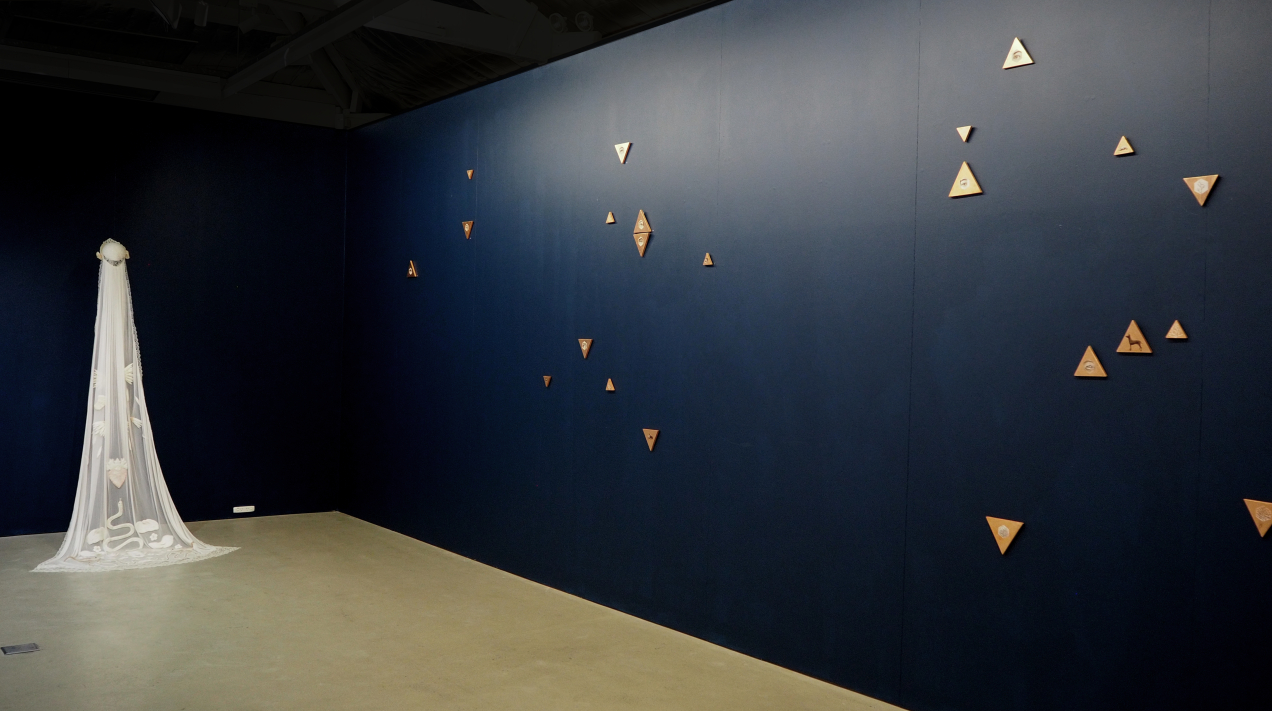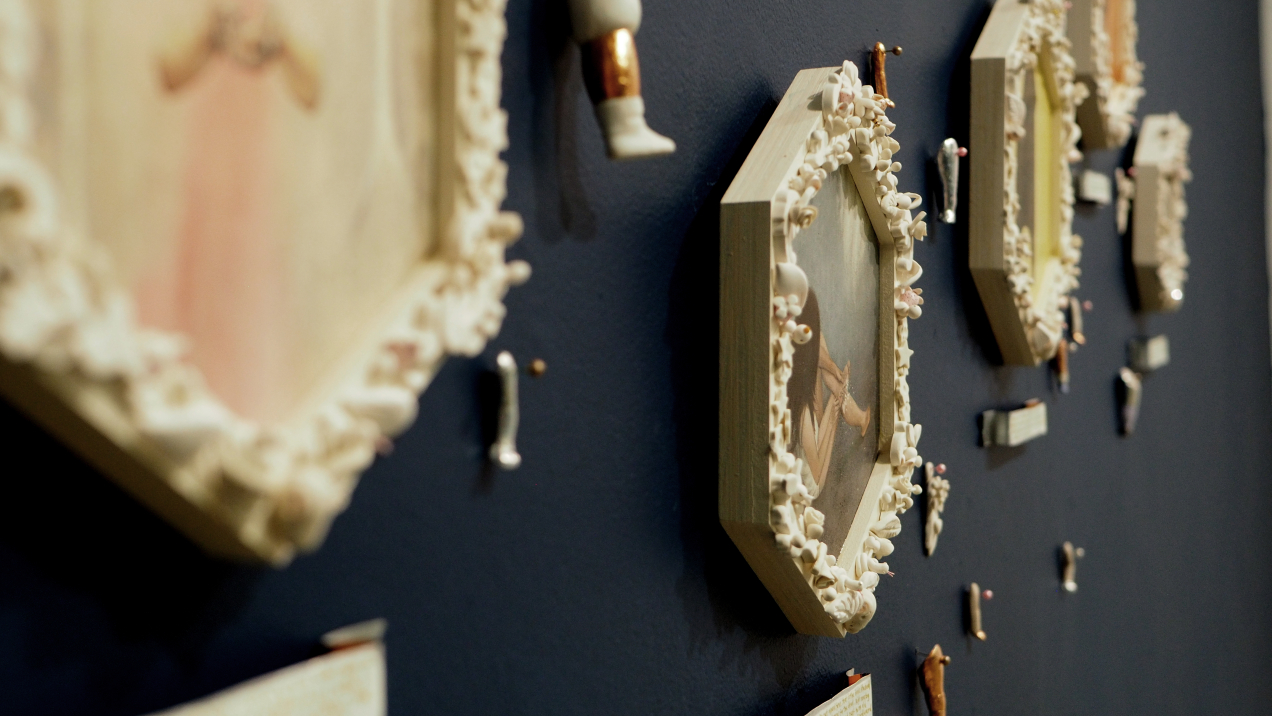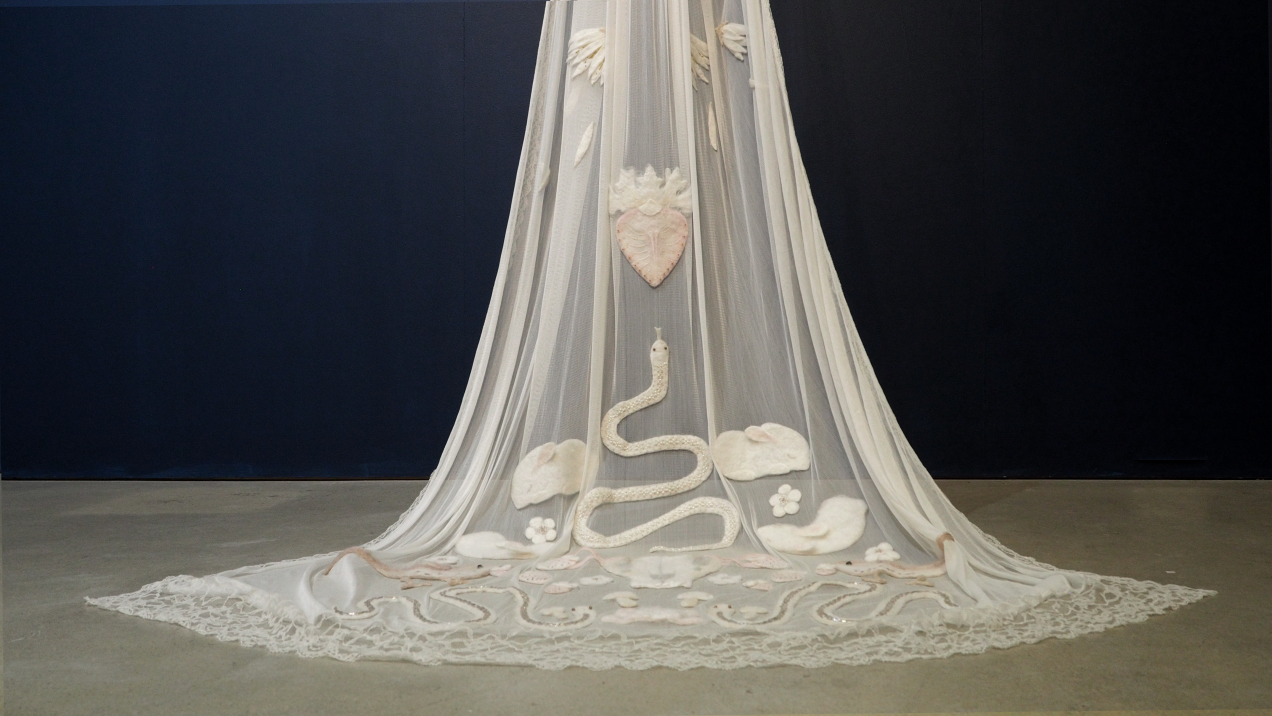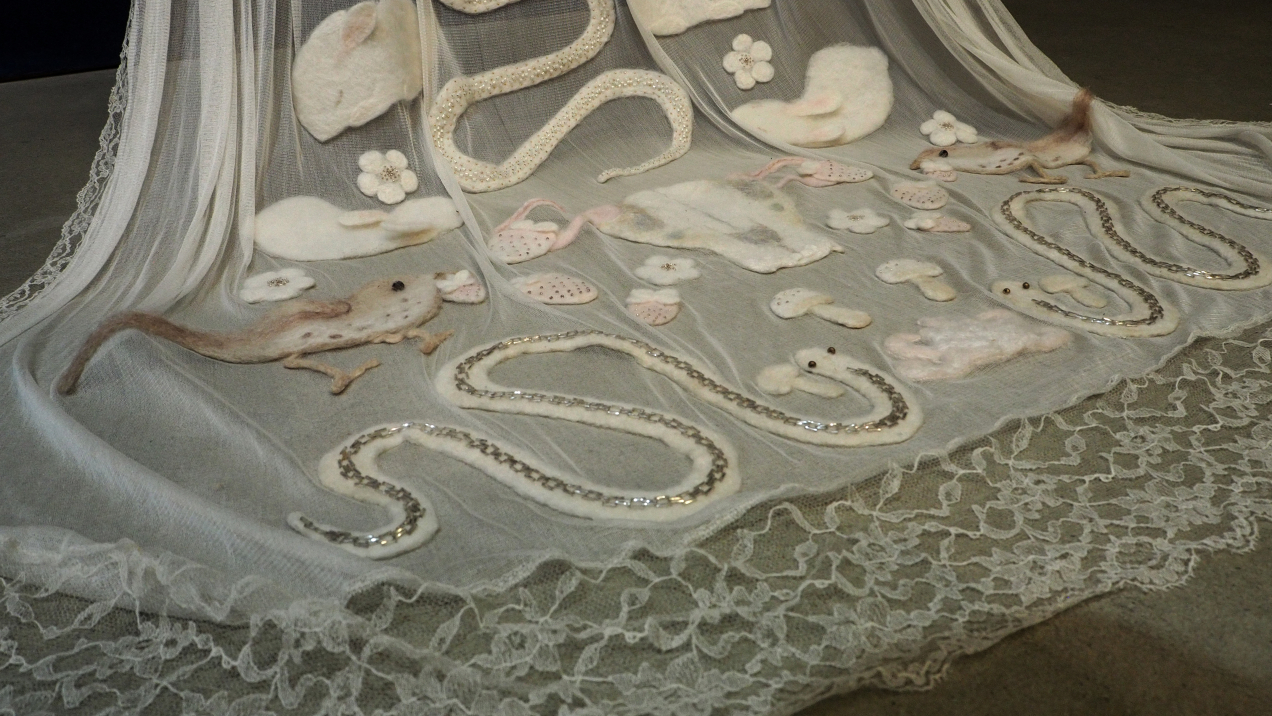Turner Gallery, Perth, Western Australia

Catalog Essay by Sian Mcmillan
Before Elizabeth shows me to the studio to discuss her work, we sit and have a cup of tea. Her dog Lali, an almost-black Mexican hairless Xoloitzcuintli (or Xolo for short), does not leave her side today. She is due to have puppies for the first time in the coming weeks and the house feels different somehow. Elizabeth and I recall our own pregnancies. For me, the first sign something was awry was a keen shift in taste and smell. On one occasion I was able to sense rain coming well before the sky changed, perhaps not surprising given that my body’s composition was overwhelmingly made up of water. I was attuned to the world in a way that made me feel at once a heightened connection to my environment and strangely alienated to the people around me. I can see that Lali is feeling this, she shadows Elizabeth as if to gauge how best to behave in these new times.
In Aztec mythology, dogs are considered wayfinders in the afterlife. The story tells of the god Xolotl gifting humans with the Xolo who will guide their souls on their journey through the underworld in exchange for devotion and care. And so the Xolo breed has long been considered sacred; they are guardians and protectors, not only from intruders but from evil spirits.
Dogs are a recurring feature in Elizabeth’s oeuvre, they keep company alongside themes of love and loss, a constant companion. I imagine Worthless Remains conceived and realised by Elizabeth with Lali ever present, sharing a silent dialogue, both germinating, both responding to the subtle vibration of cells dividing and new life growing.
This collection of work, which utilises studio remnants and forgotten fragments from previous installations, conflates the artist’s musings of loved ones both passed and present. Here, death sits alongside the living and newly born. The image of a sleeping puppy, it’s soft belly exposed, chimes against the tightly cropped image of a clouded eye belonging to her grandfather. Both seem to hover too close to death, but while one might pass with a quiet knowingness the other is so fragile, so naive of the dangers beyond the open gate.
The death of a grandparent or a pet are often experienced when we are young. As our first encounter with a loss, they slice into us a sadness and ache not even our mothers can provide a salve for. These works invite us to revisit that tender grief, the heady fog of birth and the heart swell of love. They offer us a look at those closely held moments and feelings often obscured by an overabundance of emotion and presents us with a system of milagros (Mexican votive charms) by which to honour them.
A small figure of a snake on copper foil sits below a larger canvas on Elizabeth’s wall, as if to punctuate the story, and it snags on something in me. I am reminded of the creation figure in Noongar culture, the serpent Waugul (Waug meaning soul, spirit or breath*) mother of all things who, as I understand it, resides in the fresh waterways that nourish life. I imagine the Dog meeting the Serpent at a river’s’ edge. They share stories of those that have come and gone. Dog dips his head and laps at the water before heading back to work and Serpent takes a deep breath then recoils to her river bed for slumber. Because mothers need all the sleep they can get.
We are at her work desk now, the three of us, and Elizabeth speaks to me of comfort. She talks me through the process of painting a loved one’s eye in such detail and the intimate hours spent with thoughts of that person bringing a sense of solace. This exquisite oil rendering is what remains of those thoughts, now bound with memories of moments spent painting with Lali underfoot, the puppies, motherhood. It’s all there.
I come away from my studio visit with Elizabeth thinking of the snake, the dog, of family, those I have lost and who my children will never meet. They all float in a space removed from lineal time, connected as if suspended in a body of water.





